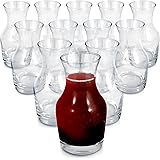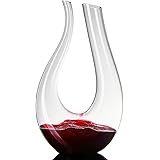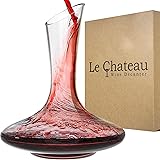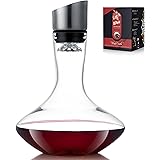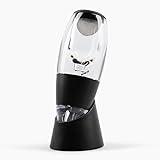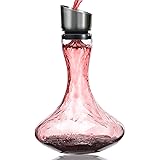Crafting Your Own Blueberry Wine: A Beginner’s Guide to Homemade Deliciousness
The allure of creating your own wine at home can often feel like a complex endeavor, reserved only for seasoned experts. Many aspiring vintners are deterred by the perceived difficulty and the myriad of specialized equipment required. However, as demonstrated in the insightful video above, making delicious fruit wine, specifically blueberry wine, is entirely achievable for beginners. This comprehensive guide will expand upon the foundational steps introduced in the video, providing a detailed roadmap to successfully make blueberry wine, ensuring a rewarding and flavorful experience.
Embarking on Your Winemaking Journey: Why Homemade Blueberry Wine?
Winemaking is an ancient art that has been adapted over centuries, making it accessible even in a home setting. Choosing blueberries for your inaugural batch of homemade wine is an excellent decision, as they offer a balanced sweetness and acidity, lending themselves beautifully to fermentation. Furthermore, the process of creating a unique beverage from scratch provides immense satisfaction, transforming simple ingredients into a sophisticated drink. It is a rewarding hobby, fostering both creativity and a deeper appreciation for the nuanced flavors of wine.
The satisfaction derived from serving a bottle of wine that was personally crafted, perhaps even a distinctive blueberry cheesecake wine as mentioned in the video, cannot be overstated. This hands-on approach allows for complete control over the flavor profile, sweetness level, and alcohol content, tailoring the finished product precisely to one’s preferences. Consequently, home winemaking opens up a world of experimentation and personalized culinary adventures.
Essential Ingredients for Your Blueberry Wine Recipe
To embark on the journey of making blueberry wine, a few fundamental ingredients are required, forming the backbone of your homemade brew. As highlighted in the video, the core components include fruit, water, sugar, yeast, and a selection of crucial additives. Understanding the role of each ingredient is paramount to achieving a successful and delicious outcome.
The Foundation: Fresh Blueberries and Water
For a gallon of blueberry wine, approximately three to four pounds of fruit are typically recommended. This quantity ensures a robust flavor profile and adequate fermentable sugars. While fresh blueberries are ideal, frozen blueberries can also be utilized, often being more readily available year-round. It is important that the fruit be ripe and free from mold or spoilage. The water used should be clean and free of chlorine, as chlorine can inhibit yeast activity; filtered or distilled water is often preferred for optimal results.
Sweetness and Structure: Sugar and Yeast
Sugar is the primary fuel source for the yeast, which in turn produces alcohol. Granulated cane sugar is commonly used, but brown sugar or honey can be incorporated for different flavor nuances. The amount of sugar added will directly influence the final alcohol percentage of your blueberry wine. The yeast, often referred to as the “worker bees” of winemaking, converts the sugars into alcohol and carbon dioxide. Specific wine yeasts, such as Lalvin EC-1118 or Lalvin K1V-1116, are typically chosen for their robust fermentation capabilities and ability to thrive in higher alcohol environments, ensuring a complete and efficient fermentation.
Beyond the Basics: Crucial Additives for Quality Wine
Beyond the core ingredients, several additives are employed to optimize the winemaking process and enhance the quality of your blueberry wine. Pectic enzyme is frequently added to break down the fruit’s pectin, preventing a hazy appearance and improving juice extraction. Yeast nutrients provide essential minerals and nitrogen for healthy yeast propagation, ensuring a vigorous fermentation. Furthermore, an acid blend (tartaric, citric, and malic acids) can be used to balance the wine’s acidity, while tannins, often in the form of grape tannin powder, contribute to mouthfeel, structure, and aging potential. Campden tablets, primarily potassium metabisulfite, are also used to sanitize equipment and inhibit wild yeasts and bacteria, preparing a clean slate for your chosen wine yeast.
Understanding the Fermentation Process for Flawless Blueberry Wine
The transformation of fruit juice into wine is primarily driven by fermentation, a fascinating biological process. This stage is critical for developing the alcohol content and initial flavor complexities of your blueberry wine. Careful monitoring and understanding of this process are essential for a successful batch.
The Hydrometer: Your Winemaking Compass
Before the yeast is pitched, a crucial step involves measuring the must’s (unfermented juice) potential alcohol percentage using a hydrometer. This tool measures the specific gravity of the liquid, indicating the concentration of dissolved sugars. An initial reading, often called the Original Gravity (OG), allows for the calculation of the potential alcohol by volume (ABV) once fermentation is complete. As the yeast consumes the sugars, the specific gravity decreases, and a Final Gravity (FG) reading is taken at the end of fermentation. The difference between these two readings reveals the actual alcohol content; in the video, a final ABV of 14% was achieved, signifying a successful and potent fermentation.
The Role of Yeast and the Air Lock’s Importance
Alcohol is formed as the yeast metabolizes the sugars present in the must. During this metabolic process, carbon dioxide (CO2) gas is released as a byproduct. Consequently, an airlock is an indispensable component in winemaking, allowing the CO2 to escape from the fermentation vessel while preventing oxygen and contaminants from entering. Exposure to oxygen during active fermentation can lead to oxidation, producing off-flavors and potentially spoiling the wine. The steady bubbling of the airlock serves as a visible indicator of active fermentation, assuring the winemaker that the yeast is diligently working.
The Art of Stabilization and Flavoring Homemade Blueberry Wine
Once primary fermentation has ceased, the journey of your blueberry wine continues with stabilization and, optionally, flavoring. These steps are crucial for ensuring the wine remains stable, preventing unwanted refermentation in the bottle, and allowing for the fine-tuning of its taste profile.
Halting Fermentation: The Stabilization Step
After a few weeks of fermentation, it is prudent to stabilize the wine. This process involves adding agents such as potassium metabisulfite (found in Campden tablets) and potassium sorbate, which effectively inhibit any remaining yeast from reactivating and fermenting residual sugars. Without stabilization, there is a risk of secondary fermentation occurring in the bottle, which could lead to exploding bottles or an unintended sparkling wine. Stabilization also helps to preserve the wine’s freshness and protect it from oxidation during the aging process, ensuring a higher quality final product.
Sweetening and Enhancing Your Blueberry Wine
Upon stabilization, the wine can be sweetened to taste. Many dry wines are not sweetened, but fruit wines, particularly blueberry wine, often benefit from a touch of sweetness to balance their tartness and enhance their fruit character. Sucrose (table sugar) is commonly dissolved and added, or non-fermentable sweeteners can be used to achieve the desired level of sweetness without risking further fermentation. As ingeniously demonstrated in the video, experimentation with flavorings, such as the addition of cheesecake flavoring to create a blueberry cheesecake wine, can transform a good wine into a truly unique and memorable beverage. This creative stage allows for personal expression and the development of distinctive wine profiles.
Aging and Bottling Your Blueberry Wine Creation
The final stages in the winemaking process involve aging and bottling, where your blueberry wine matures and becomes ready for enjoyment. These steps require patience and attention to detail, ensuring your hard work culminates in a delightful drink.
After stabilization and optional sweetening, the wine is typically transferred to a clean carboy or aging vessel for a few weeks or even months. During this aging period, the flavors are allowed to integrate and mellow, and any remaining suspended particles settle, contributing to a clearer wine. This process often involves “racking,” which means siphoning the wine off the sediment (lees) at the bottom of the vessel, preventing off-flavors from developing. Optimal aging conditions include a cool, dark, and consistent temperature environment, minimizing exposure to light and temperature fluctuations.
Finally, once the aging period is complete and the blueberry wine has reached its peak clarity and flavor, it is ready for bottling. Thorough sanitization of bottles and corks is paramount to prevent spoilage. The wine is then carefully siphoned into bottles, leaving appropriate headspace, and sealed with corks or screw caps. Proper bottling ensures the wine’s longevity and preserves its quality until it is ready to be uncorked and savored. The homemade blueberry wine, a product of care and craftsmanship, can then be enjoyed as a testament to your winemaking prowess.


